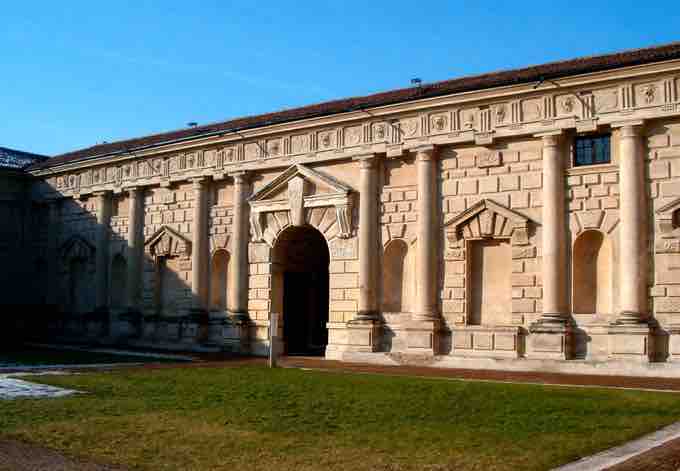During the High Renaissance, architectural concepts derived from classical antiquity were developed and used with greater surety. The most representative architect of this period is Bramante (1444–1514), who expanded the applicability of classical architecture to contemporary buildings in a style that would dominate Italian architecture in the 16th century. Hallmarks of High Renaissance architecture are symmetry, proportion, order, harmony, and deliberate references to the buildings of the classical past.
During the Mannerist period architects experimented with using architectural forms to emphasize solid and spatial relationships. They did so by deliberately playing with the symmetry, order, and harmony typically found in Renaissance architecture. As a result, Mannerist architecture appears playful, almost as if the architects are deliberately playing with expectations put forth by Renaissance architecture.
In Mannerist architecture, the Renaissance ideal of harmony gave way to freer and more imaginative rhythms. The best known artist associated with the Mannerist style is Michelangelo (1475–1564). With his design for the vestibule of the Laurentian Library, there are ambiguities of how to read the space, which result from Michelangelo's playfulness with the architecture itself. Columns lean back instead of forward, and the corners come out toward you instead of recessing. Michelangelo was aware of the ideals of Renaissance architecture but he is deliberately playing with those ideals and creating something new.
Michelangelo, Vestibule of the Laurentian Library, Florence
With his design, Michelangelo played with the classical proportions and harmony of Renaissance architecture to create something new.
Stylistically, Mannerist architecture was marked by widely diverging tendencies from Renaissance and Medieval styles that eventually led to the Baroque style, in which the same architectural vocabulary was used for very different rhetoric.
Baldassare Peruzzi (1481–1536) was an architect working in Rome whose work bridged the High Renaissance and Mannerism. His Villa Farnesina of 1509 is a very regular monumental cube of two equal stories, with the bays articulated by orders of pilasters.
Villa Farnesina, Rome, by Peruzzi, 1506–1510.
Peruzzi's most famous work is the Palazzo Massimo alle Colonne in Rome. The unusual features of this building are that its façade curves gently to follow a curving street. It has, in its ground floor, a dark central portico running parallel to the street, but as a semi enclosed space, rather than an open loggia. Above this, three undifferentiated floors rise, the upper two with identical small horizontal windows in thin flat frames that contrast strangely with the deep porch, which has served, from the time of its construction, as a refuge to the city's poor. All of these architectural features are unexpected and disrupt the ideas of harmonious proportions, making it a Mannerist building.
Palazzo Massimo alle Colonne, Rome, by Peruzzi
Giulio Romano (1499–1546) was a pupil of Raphael, assisting him on various works for the Vatican. Romano was also a highly inventive designer, working for Federico II Gonzaga at Mantua on the Palazzo del Te (1524–1534), a project that combined his skills as architect, sculptor, and painter. In this work, which incorporated garden grottoes and extensive frescoes, he uses illusionistic effects, surprising combinations of architectural form and texture, and features that seem somewhat disproportionate or out of alignment, making it very much a Mannerist structure.

Palazzo del Te, Manuta, by Romano, 1524–1534.
Romano's Palazzo del Te incorporates mixture of architectural forms and textures.